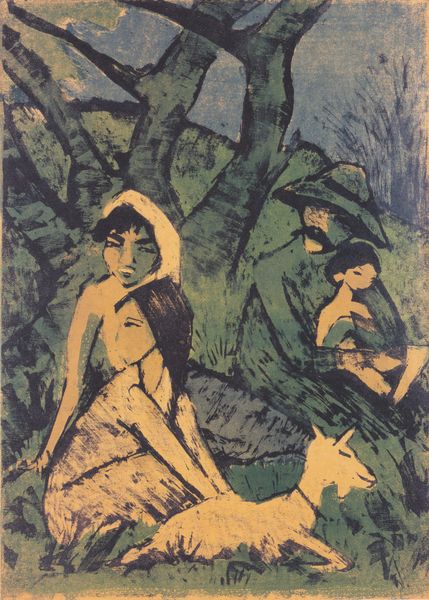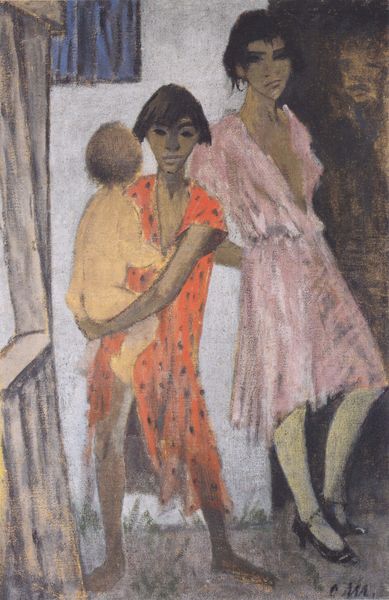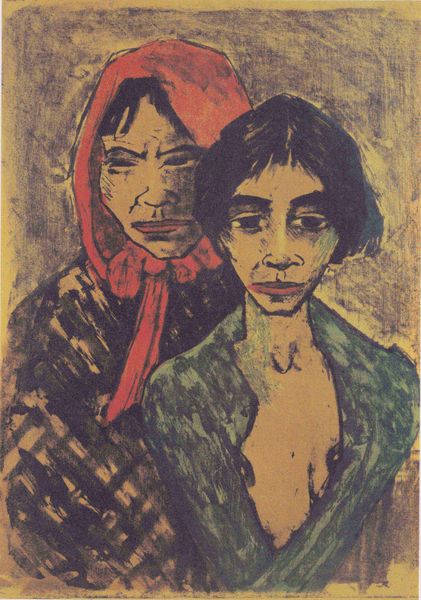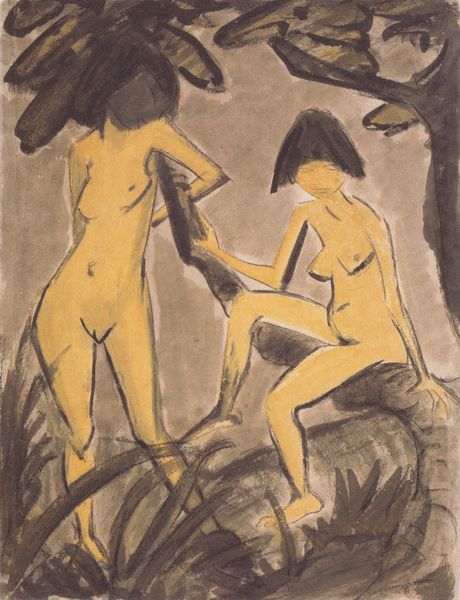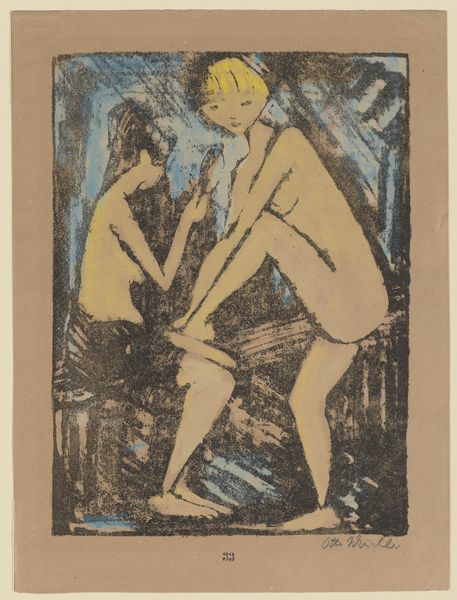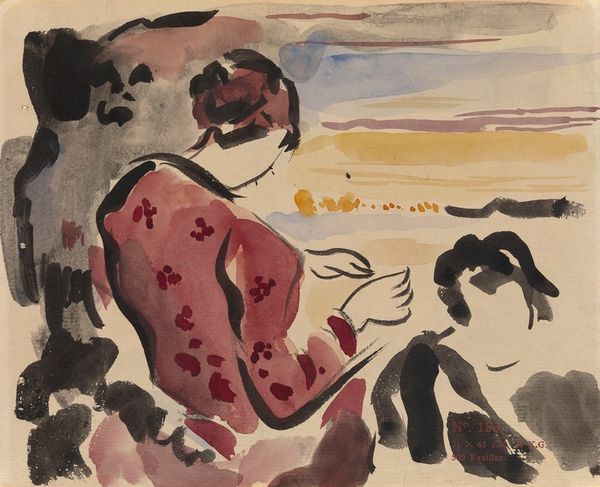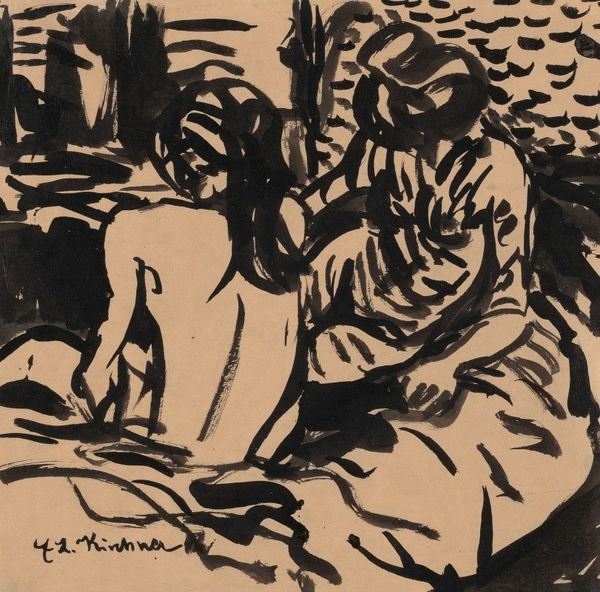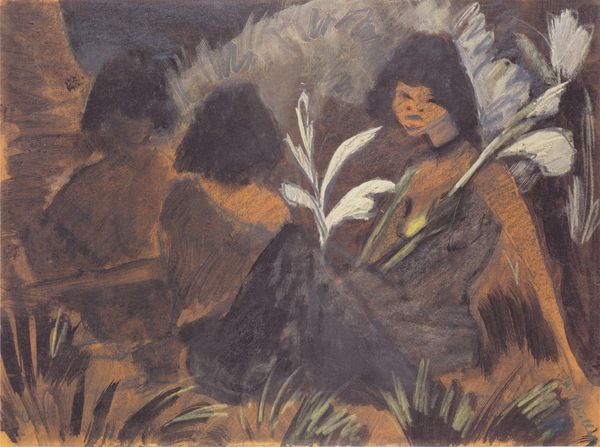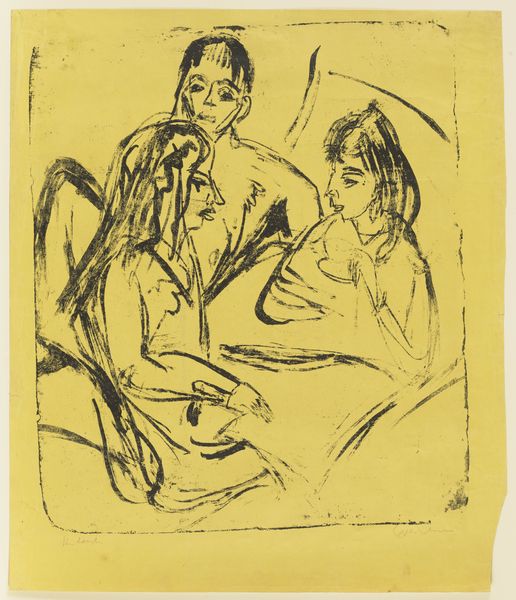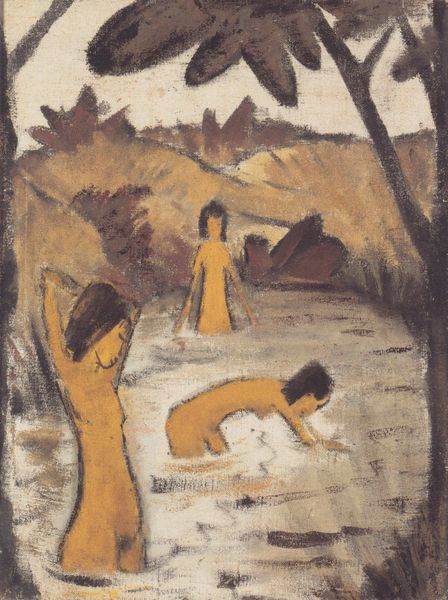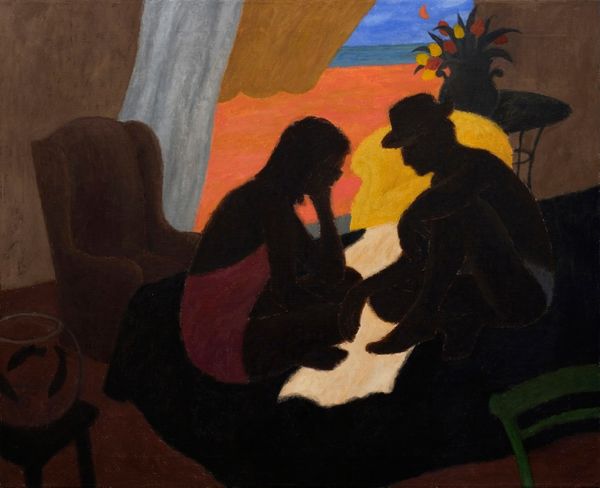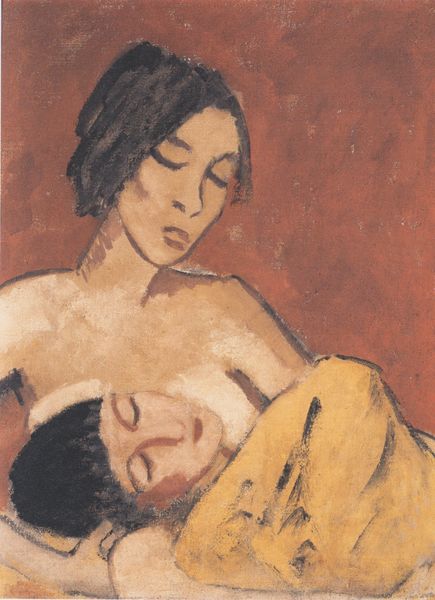
painting, watercolor, ink
#
portrait
#
painting
#
oil painting
#
watercolor
#
ink
#
expressionism
#
genre-painting
#
nude
#
watercolor
Dimensions: 50.3 x 70 cm
Copyright: Public domain
Curator: Let's consider "Zwei Zigeunerkinder Im Wohnraum," or "Two Gypsy Children in the Living Room" as it would be translated, attributed to Otto Mueller. We have limited information regarding the exact date, but it is a featured piece in the Sammlung Karsch collection, Berlin. Editor: The first thing that strikes me is the raw emotion conveyed with what looks like watercolor and ink, maybe even oil paint. It feels like a very personal snapshot into an intimate, though perhaps unsettling, domestic scene. Curator: Precisely, and that raw quality speaks volumes about Expressionist techniques. The use of visible brushstrokes, the somewhat crude rendering of the figures – all contribute to that emotional intensity we often see during that time. Editor: What's really captivating is the table and window setting. It's simple enough but feels staged for the viewers, or maybe the two girls are getting ready to present their art? I am keen to learn more about the historical context of such "genre-paintings." Were there specific cultural tropes at play regarding portrayals of the Romani? Curator: There certainly were. Images of Romani people were often loaded with exoticism, stereotypes, even prejudice. But Mueller seems to engage with this a bit, perhaps trying to reflect a slice of daily life of his models and his Bohemian contemporaries by using different art mediums. How his own class and socialization reflect here is always a critical aspect. Editor: The medium of choice – watercolor combined with ink – speaks volumes too, I think. Watercolor possesses that unique ephemeral and translucent quality and is accessible to everyone. This accessibility could symbolize those portrayed in this Expressionistic genre painting: their transient lives within early twentieth-century German society. It's a contrast – to be 'inside' while simultaneously marginalized. Curator: An excellent observation! And understanding these layers is important, seeing the labor of creating such representations, but also interrogating what it is about, and why the artwork generates discussion like this. Editor: Agreed. I'm leaving with more questions than answers about the social role of museums in showcasing such art. I think the use of expressionist visual strategies serves to highlight their emotional core, and challenges us to go beyond mere surface appearances of artistic expression. Curator: Absolutely. Thinking about how such pieces contribute to the wider narrative around identity and representation enriches the appreciation of "Zwei Zigeunerkinder Im Wohnraum," leaving a thought provoking engagement in socio-cultural art expressions.
Comments
No comments
Be the first to comment and join the conversation on the ultimate creative platform.
